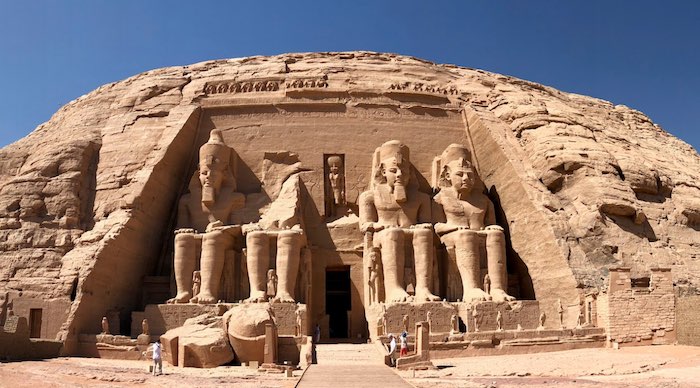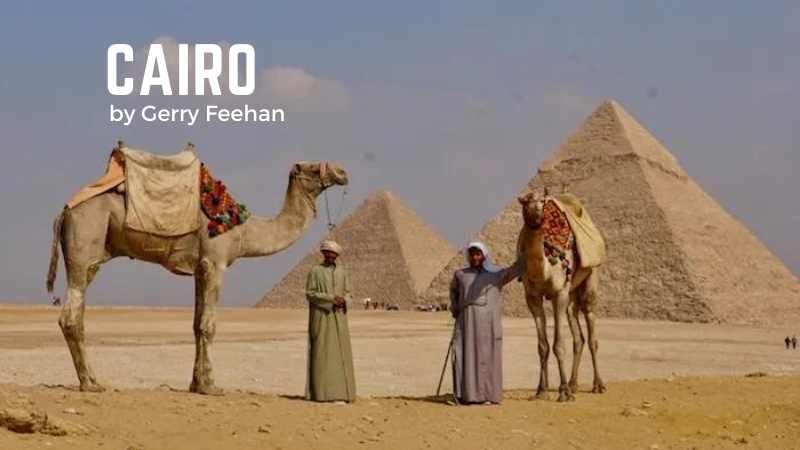Gerry Feehan
8 miles off the coast of Ireland Gerry Feehan’s “Buddy-Hike” discovers the Skellig Islands

Skellig Islands, Ireland (part 3 of a 3 part series)
Click to read Part 1, Gerry’s buddy trip to Ireland
We will travel again but in the meantime, enjoy Gerry’s ‘Buddy Trip to Ireland’
Click to read Part 2, Hiking in Ireland

The remains of Skellig Michael’s 6th century monastery
Although the fine details of our trip to the Emerald Isle had been neatly settled months before leaving Canada, the folks at www.irelandwalkhikebike.com contacted me shortly before our departure to suggest a change in the itinerary. We could skip a day of hiking Ireland’s west coast and instead visit the Skellig Islands, a craggy set of rocks poking forlornly out of the Celtic Sea, eight rough miles off the Kerry coast. Initially I was reluctant to dedicate an entire day to seasickness. But there was something in the tone of the email that suggested this was an opportunity not to be missed. And so, foregoing my own health and thinking first of others—as I am wont to do—the boat trip for our group of six was booked.
We arrived in the sleepy seaside town of Cahersiveen on the fourth day of our weeklong Irish trekking adventure. Elaine, our hiking guide, drove us to the boat and cheerily waved goodbye. She doesn’t fare well at sea either and was happy to keep her feet dry for the day. When we arrived at the pier the sky was grey and the sea looked rough. There were a lot of anxious-looking people milling about the wharf. I wandered over to a fellow who was tying knots or scaling barnacles or some such other salty-dog task that identified him as a mariner. He was in fact the first mate. I inquired as to how the boat ride might be.
He turned to me, squinted, looked up at the sky and said, “It’s going to be terrible.”
“How terrible?” I asked.
“Miserable terrible” he said, with conviction.
“Can things get worse than miserable terrible,” I asked.
“Aye,” said he, “there’s awful terrible. That’s when, as you leave the pub, you hold your hand over your face so the wind don’t blow your teeth out.”
Reassured, I stepped around the back of the boat, practiced my vomiting stance, then returned to the gangplank, stepped aboard and prepared myself for a truly awful experience.
The 90-minute motor out was windy, choppy and exposed. The small boat rolled and rocked in the constant swell. But I’ve learned from vast seafaring experience that the best method to prevent seasickness is to stand up, hang on and concentrate unfailingly on the horizon. This I did for an hour and a half and landed with a full stomach—which is more than I can say for the pretty young Irish lass who, by the time the Skelligs came into sight, was tossing her breakfast of rashers and black pudding over the stern.
We weren’t sure what to expect of the Skelligs—other than the rough boat ride, a lot of nesting seabirds and a steep set of steps up a cliff to some ancient Gaelic ruins. As we neared the tight landing at Skellig Michael, birds were soaring and diving in a feeding frenzy. “What are they?” I asked the first mate.
“The big ones, those are gannets,” he answered, “And the little colourful fellars, them are puffins.”
My wife Florence looked up from her knitting. (Yes, she can knit onboard a dinghy in a gale.) “Puffins? Did you say puffins?” “Aye, Atlantic puffins ma’am, in breeding plumage.”
Florence was so excited she nearly dropped a stitch. She has yearned to see puffins for years. I thought we’d need to visit Greenland or Labrador or some other remote, inaccessible place to view these remarkable birds. And lo, here, on a last-minute Irish hiking side-trip, the cute little cliff dwellers appeared in unexpected, colourful brilliance—magnificent mating feathers on full display.
The small boat rocked into the landing. The first mate quickly tied off as the captain helped us hop-step onto the pier. Within seconds the boat was gone, back into the rough offshore sea, where she would wait, bobbing like a cork, for the two hours of our Skellig visit. We stumbled off the landing, regained our land legs and looked up. A narrow, exposed staircase, carved into the uneven rock face rose steeply upward, beyond the ken of craned necks.
Access to the islands is forbidden without a local guide. Our escort, Sinead explained that Skellig Michael was inhabited by Gaelic monks starting in the sixth century and then abandoned a few centuries later. It was these early voyagers who had carved the sheer staircase directly into the rock. At the precarious summit 180 meters up, they had built a few lonely stone structures. Here they lived a life of cold, isolated austerity, living off fish and bird’s eggs—scraping a meagre sustenance from the infertile rock.
The guide told us the steps were steep and uneven, with no handrails – and that those with even an ounce of acrophobia in their veins should not attempt the climb. Properly forewarned and with eyes cast downward to avert the consequences of a misstep, we began our ascent up the 880 steps to the monastery on the stony peak.

It’s 880 precarious stone steps to the summit
As we climbed nesting puffins, mere feet away, went about their business, oblivious to our presence. These birds evolved in an environment lacking predators. With its magnificent ruins and endemic unworried birds, Skellig Michael is a perfect mix between Machu Pichu and the Galapagos Islands.


Atlantic puffins in full breeding plumage
When we reached the top, the summit flattened into a small walled compound of beehive structures made entirely of stacked stone. And despite the absence of masonry, these lonely dwellings have withstood a thousand battering years of Irish rain and wind.

The Skellig Islands poke forlornly out of the Celtic Sea
The opening scene in the newest Star Wars movie was filmed at Skellig Michael. An unfortunate bi-product of this Hollywood notoriety will be a “Star Wars” chaser industry, where tourists converge on the island, not to observe the stark beauty of a 6th century monastery or the glorious plumage of horny puffins, but to see where Luke Skywalker eerily pronounced, “It is time for the Jedi to end.” Even without the boat ride, it makes one want to puke.
When we returned to the wharf, the weather had softened. The return boat trip was reasonably benign. Elaine awaited us when we docked, looking refreshed after a quiet stroll in the green fens above Cahersiveen. “Well, how was it?” she asked. The others gushed on about the stone stairs, the view, the ruins and the Darwinian fauna experience. I looked at her, holding my hand over my mouth in feigned illness, and said, “Wow”.
If you go: www.irelandwalkhikebike.com
 Gerry Feehan is an award-winning travel writer and photographer. He and his wife Florence now live in Kimberley, BC!
Gerry Feehan is an award-winning travel writer and photographer. He and his wife Florence now live in Kimberley, BC!
Thanks to Kennedy Wealth Management and Ing and McKee Insurance for sponsoring this series. Click on their ads and learn more about these long-term local businesses.
Angling and adventure greet our intrepid traveller on Padre Island
Gerry Feehan
Abu Simbel

Abu Simbel is a marvel of ancient and modern engineering
I love looking out the window of an airplane at the earth far below, seeing where coast meets water or observing the eroded remains of some ancient formation in the changing light. Alas, the grimy desert sand hadn’t been cleaned from the windows of our EgyptAir jet, so we couldn’t see a thing as we flew over Lake Nasser en route to Abu Simbel. I was hopeful that this lack of attention to detail would not extend to other minor maintenance items, such as ensuring the cabin was pressurized or the fuel tank full.
We had just spent a week on a dahabiya sailboat cruising the Nile River, and after disembarking at Aswan, were headed further south to see one of Egypt’s great
monuments. There are a couple of ways to get to Abu Simbel from Aswan. You can ride a bus for 4 hours through the scorched Sahara Desert, or you can take a plane for the short 45-minute flight.
Opaque windows notwithstanding, I was glad we had chosen travel by air. Abu Simbel is spectacular, but there’s really not much to see except the monument itself and a small adjacent museum. So most tourists, us included, make the return trip in a day. And fortunately we had Sayed Mansour, an Egyptologist, on board. Sayed was there to explain all and clear our pained expressions.
Although it was early November, the intense Nubian sun was almost directly overhead, so Sayed led us to a quiet, shady spot where he began our introduction to
Egyptian history. Abu Simbel is a marvel of engineering — both modern and ancient. The temples were constructed during the reign of Ramses II. Carved from solid rock in a sandstone cliff overlooking the mighty river, these massive twin temples stood sentinel at a menacing bend in the Nile — and served as an intimidating obstacle to would-be invaders — for over 3000 years. But eventually Abu Simbel fell into disuse and succumbed to the inevitable, unrelenting Sahara. The site was nearly swallowed by sand when it was “rediscovered” by European adventurers in the early 19 th century. After years of excavation and restoration, the monuments resumed their original glory.
Then, in the 1960’s, Egyptian president Abdel Nasser decided to construct a new “High Dam” at Aswan. Doing so would create the largest man-made lake in the
world, 5250 sq km of backed-up Nile River. This ambitious project would bring economic benefit to parched Egypt, control the unpredictable annual Nile flood and also supply hydroelectric power to a poor, under-developed country. With the dam, the lights would go on in most Egyptian villages for the first time. But there were also a couple of drawbacks, which were conveniently swept under the water carpet by the government. The new reservoir would displace the local Nubian population whose forbearers had farmed the fertile banks of the Nile River for millennia. And many of Egypt’s greatest monuments and tombs would be forever submerged beneath the deep new basin — Abu Simbel included. But the government proceeded with the dam, monuments be damned.
Only after the water began to rise did an international team of archaeologists, scientists — and an army of labourers — begin the process of preserving these
colossal wonders. In an urgent race against the rising tide, the temples of Abu Simbel were surgically sliced into gigantic pieces, transported up the bank to safety and reassembled. The process was remarkable, a feat of engineering genius. And today the twin edifices, honouring Ramses and his wife Nefertari remain, gigantic, imperious and intact. But instead of overlooking a daunting corner of the Nile, this UNESCO World Heritage site now stands guard over a vast shimmering lake.
Sayed led us into the courtyard from our shady refuge and pointed to the four giant Colossi that decorate the exterior façade of the main temple. These statues of
Ramses were sculpted directly from Nile bedrock and sat stonily observing the river for 33 centuries. It was brutally hot under the direct sun. I was grateful for the new hat I had just acquired from a gullible street merchant. Poor fellow didn’t know what hit him. He started out demanding $40, but after a prolonged and brilliant negotiating session, I closed the deal for a trifling $36. It was difficult to hold back a grin as I sauntered away sporting my new fedora — although the thing did fall apart a couple of days later.
Sayed walked us toward the sacred heart of the shrine and lowered his voice. Like all Egyptians, Sayed’s native tongue is Arabic. But, oddly, his otherwise perfect English betrayed a slight cockney accent. (Sayed later disclosed that he had spent a couple of years working in an East London parts factory.) He showed us how the great hypostyle hall of the temple’s interior is supported by eight enormous pillars honouring Osiris, god of the underworld.

Exploring the inner temple

Nefertari
Sayed then left us to our devices. There were no other tourists. We had this incredible place to ourselves. In the dim light, we scampered amongst the sculptures
and sarcophagi, wandering, hiding and giggling as we explored the interior and its side chambers. At the far end lay the “the holiest of holies” a room whose walls were adorned with ornate carvings honouring the great Pharaoh’s victories — and offering tribute to the gods that made Ramses’ triumphs possible.
Exterior photographs of Abu Simbel are permitted, but pictures from within the sanctuary are verboten — a rule strictly enforced by the vigilant temple guardians — unless you offer a little baksheesh… in which case you can snap away to your heart’s content. Palms suitably greased, the caretakers are happy to pose with you in front of a hidden hieroglyph or a forbidden frieze, notwithstanding the stern glare of Ramses looking down from above.

A little baksheesh is key to holding the key
After our brief few hours at Abu Simbel, we hopped back on the plane. The panes weren’t any clearer but, acknowledging that there really wasn’t much to see in the Sahara — and that dirty airplane windows are not really a bona fide safety concern — I took time on the short flight to relax and bone up on Ramses the Great, whose mummified body awaited us at the Egyptian Museum in Cairo.
Exodus Travel skilfully handled every detail of our Egypt adventure: www.exodustravels.com/
Gerry Feehan is an award-winning travel writer and photographer. He lives in Kimberley, BC.

Thanks to Kennedy Wealth Management for sponsoring this series. Click on the ads and learn more about this long-term local business.
Gerry Feehan
Cairo – Al-Qahirah

The Pyramids of Giza
The first thing one notices upon arrival in Egypt is the intense level of security. I was screened once, scanned twice and patted down thrice between the time we landed at the airport and when we finally stepped out into the muggy Cairo evening. At our hotel the scrutiny continued with one last investigation of our luggage in the lobby. Although Egyptian security is abundant in quantity, the quality is questionable. The airport x-ray fellow, examining the egg shaker in my ukulele case, sternly demanded, “This, this, open this.” When I innocently shook the little plastic thing to demonstrate its impermeability he recoiled in horror, but then observed it with fascination and called over his supervisor. Thus began an animated, impromptu percussion session. As for the ukulele, it was confiscated at hotel check-in and imprisoned in the coat check for the duration of our Cairo stay. The reasons proffered for the seizure of this innocuous little instrument ranged from “safety purposes” to “forbidden entertainment”. When, after a very long day, we finally collapsed exhausted into bed, I was shaken — but did not stir.
Al-Qahirah has 20 million inhabitants, all squeezed into a thin green strip along the Nile River. Fading infrastructure and an exponential growth in vehicles have contributed to its well-deserved reputation as one of the world’s most traffic-congested cities. The 20km trip from our hotel in the city center, to the Great Pyramid of Cheops at Giza across the river, took nearly two hours. The driver smiled, “Very good, not rush hour.”
Our entrance fee for the Giza site was prepaid but we elected to fork out the extra Egyptian pounds to gain access to the interior of the Great Pyramid. Despite the up-charge — and the narrow, dark, claustrophobic climb – the reward, standing in Cheop’s eternal resting place, a crypt hidden deep inside the pyramid, was well worth it. We also chose to stay after sunset, dine al fresco in the warm Egyptian evening, and watch the celebrated ‘sound and light’ performance. The show was good. The food was marginal. Our waiter’s name was Fahid. Like many devout Muslim men, he sported a zabiba, or prayer bump, a callus developed on the forehead from years of prostration. Unfortunately throughout the event Fahid hovered over us, attentive to the point of irritation, blocking our view of the spectacle while constantly snapping fingers at his nervous underlings. The ‘son et lumière’ show was a little corny, but it’s pretty cool to see a trio of 4500-year-old pyramids – and the adjoining Great Sphinx — illuminated by 21 st century technology.

The Great Sphinx

Giza at nightThe next night our group of six Canucks attended an Egyptian cooking class. Our ebullient hostess was Anhar, (‘the River’ in Arabic). Encouraged by her contagious enthusiasm, we whipped up a nice tabouli salad, spicy chicken orzo soup and eggplant moussaka. We finished up with homemade baklava. Throughout the evening, Anhar quizzed us about the ingredients, the herbs and spices, their origins and proper method of preparation. Anyone who answered correctly was rewarded with her approving nod and a polite clap. Soon a contest ensued. Incorrect answers resulted in a loud communal ‘bzzzt’ — like the sound ending a hockey game. It’s not polite to blow one’s own horn, but the Feehan contingent acquitted themselves quite nicely. If I still had her email, Anhar could confirm this.
Cairo was not the highlight of our three-week Egyptian holiday, but a visit to the capital is mandatory. First there’s the incredible Pyramids. But as well there’s the Egyptian Museum that houses the world’s largest collection of Pharaonic antiquities including the golden finery of King Tutankhamen and the mummified remains of Ramses the Great. Ramses’ hair is rust coloured and thinning a little, but overall he looks pretty good for a guy entering his 34 th century.

Ramses the Great

Then there’s Khan el-Khalili, the old souk or Islamic bazaar. We strolled its ancient streets and narrow meandering alleyways, continually set upon by indefatigable street hawkers. “La shukraan, no thanks,” we repeated ineffectually a thousand times. The souk’s cafes were jammed. A soccer match was on. The ‘beautiful game’ is huge in Egypt. Men and women sat, eyes glued to the screen, sipping tea and inhaling hubbly bubbly.

The Old Souk Bazaar

Selfies, Souk style
An aside. When traveling in Egypt, be sure to carry some loose change for the hammam (el baño for those of you who’ve been to Mexico). At every hotel, restaurant, museum and temple — even at the humblest rural commode — an attendant vigilantly guards the lavatory. And have small bills for the requisite baksheesh. You’re not getting change.
After our evening in the souk we had an early call. Our guide Sayed Mansour met us at 6am in the hotel lobby. “Yella, yella. Hurry, let’s go,” he said. “Ana mish bahasir – I’m not joking.” “Afwan,” we said. “No problem,” and jumped into the van. As we pulled away from the curb Sayed began the day’s tutorial, reciting a poem by Percy Blythe Shelly:
I met a traveller from an antique land,
Who said—“Two vast and trunkless legs of stone
Stand in the desert. . . . My name is Ozymandias, King of Kings;
Look on my Works, ye Mighty, and despair!”
And we were off, through the desert, to Alexandria. Founded by Alexander the Great in 332 BC, Egypt’s ancient capital was built on the Nile delta, where the world’s longest river meets the Mediterranean Sea. The day was a bit of a bust. The city was once renowned for its magnificent library and the famed Lighthouse of Alexandria. But the former burnt down shortly after Christ was born and the latter — one of the original seven wonders of the ancient world – toppled into the sea a thousand years ago. Absent some interesting architecture, a nice view of the sea from the Citadel — and Sayed’s entertaining commentary — Alexandria wasn’t really worth the long day trip. Besides, we needed to get back to Cairo and pack our swimwear. Sharm el Sheikh and the warm waters of the Red Sea were next up on the Egyptian agenda.

Gerry with some Egyptian admirers
Exodus Travel skilfully handled every detail of our trip: www.exodustravels.com And, if you’re thinking of visiting Egypt, I can suggest a nice itinerary. No sense reinventing the pyramid: [email protected]
Gerry Feehan is an award-winning travel writer and photographer. He lives in Kimberley, BC.

Thanks to Kennedy Wealth Management for sponsoring this series. Click on the ads and learn more about this long-term local business.
-

 Brownstone Institute1 day ago
Brownstone Institute1 day agoDeborah Birx Gets Her Close-Up
-

 Alberta1 day ago
Alberta1 day agoCoutts Three verdict: A warning to protestors who act as liaison with police
-

 Alberta1 day ago
Alberta1 day agoAlberta moves to protect Edmonton park from Trudeau government’s ‘diversity’ plan
-

 Energy1 day ago
Energy1 day agoCanada Has All the Elements to be a Winner in Global Energy — Now Let’s Do It
-

 Opinion2 days ago
Opinion2 days agoFentanyl Fiasco: The Tragic Missteps of BC’s Drug Policy
-

 Business1 day ago
Business1 day agoMaxime Bernier warns Canadians of Trudeau’s plan to implement WEF global tax regime
-

 espionage1 day ago
espionage1 day agoCanada’s intelligence chief says he personally warned Trudeau about China’s election meddling
-

 Frontier Centre for Public Policy2 days ago
Frontier Centre for Public Policy2 days agoThe tale of two teachers







